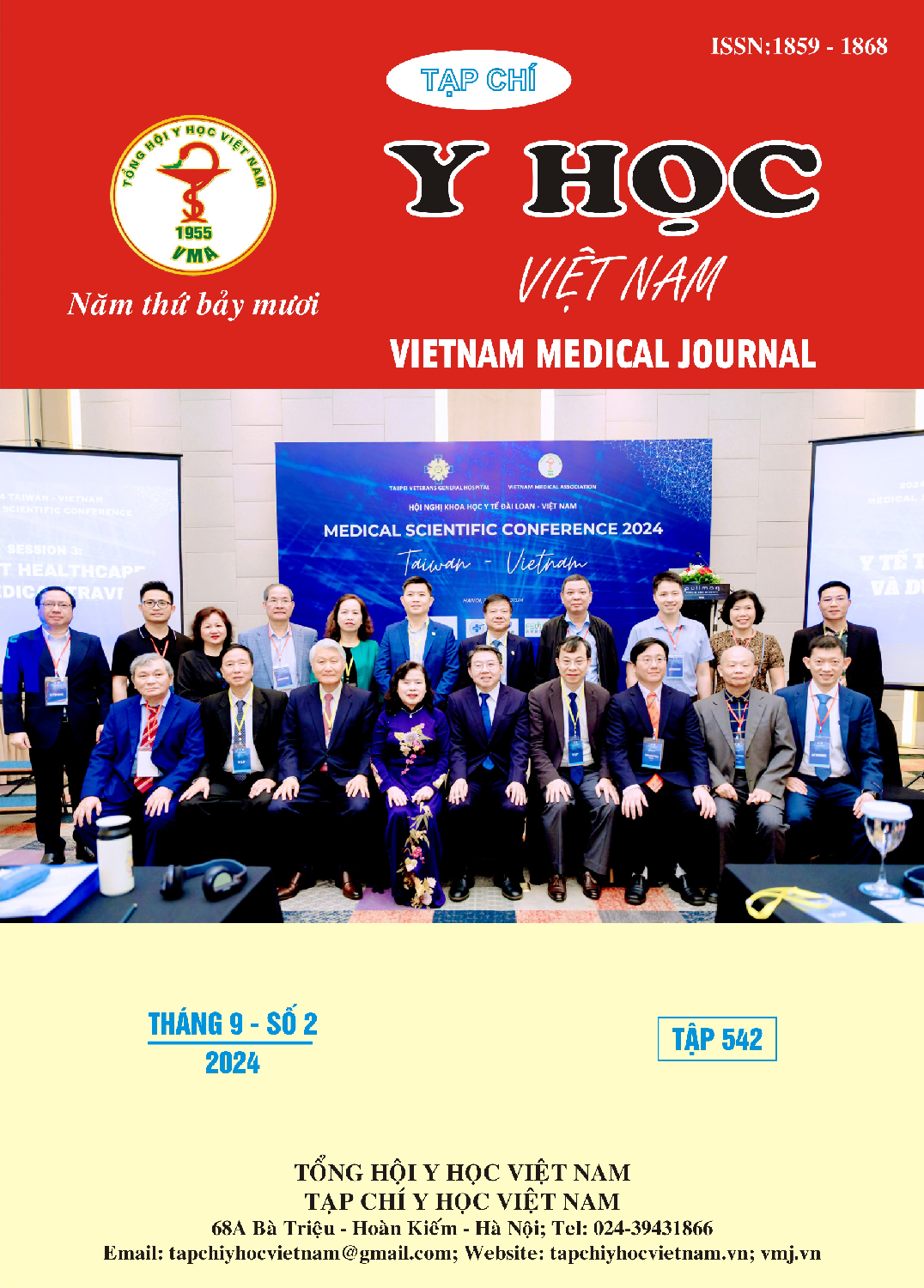MORPHOLOGIC CHARACTERISTICS OF ROOT CANAL SYSTEMS IN FIRST PREMOLARs USING CONEBEAM COMPUTER TOMOGRAPHY
Main Article Content
Abstract
Objective: To investigate the root canal system of the first premolars in Vietnamese individuals using ConeBeam CT scans. Subjects and Methods: The study was conducted on 25 extracted first premolars collected from Hanoi Medical University Hospital and the School of Dentistry, Hanoi Medical University (15 maxillary first premolars and 10 mandibular first premolars) between August 2023 and May 2024. Research method is an experimental study without control, random sample selection according to the criteria until the number of studies is sufficient. Results: Regarding the number of roots, the rate of single-rooted teeth in the maxillary first premolars group was 60%, higher than the double-rooted teeth (40%). In the mandibular first premolars group, 80% being single-rooted and 20% being double-rooted. In terms of the number of root canals, only one maxillary first premolar had a single root canal (6.7%), while the remaining teeth had two root canals (93.3%). This ratio was the same in the mandibular first premolars group. According to Vertucci's 1984 classification, the most common root canal morphology in maxillary first premolars was Type I (for single-rooted teeth) and Type V (for double-rooted teeth), and mostly Type I in mandibular first premolars. When examined on ConeBeam CT scans, the distance between the two root canals of the maxillary first premolar ranged from 2.98 ± 0.18 to 3.42 ± 0.39 mm, and this range was from 2.45 ± 0.37 to 3.58 ± 0.24 mm in the mandibular first premolars.
Article Details
Keywords
root canal, ConeBeam CT, premolars
References
2. Schneider SW. A comparison of canal preparations in straight and curved root canals. Oral Surg Oral Med Oral Pathol. 1971;32(2):271-275. doi:10.1016/0030-4220(71)90230-1
3. Aljawhar AM, Ibrahim N, Abdul Aziz A, Ahmed HMA, Azami NH. Characterization of the root and canal anatomy of maxillary premolar teeth in an Iraqi subpopulation: a cone beam computed tomography study. Odontology. 2024; 112(2):570-587. doi:10.1007/s10266-023-00870-5
4. Root and Canal Morphology of Mandibular Premolar Teeth in a Kuwaiti Subpopulation: A CBCT Clinical Study - PubMed. Accessed May 27, 2024. https://pubmed.ncbi.nlm.nih.gov/ 33353914/
5. Vertucci FJ. Root canal morphology of mandibular premolars. J Am Dent Assoc. 1978; 97(1):47-50. doi:10.14219/jada.archive.1978.0443
6. CBCT evaluation of root canal morphology and anatomical relationship of root of maxillary second premolar to maxillary sinus in a western Chinese population - PubMed. Accessed May 27, 2024. https://pubmed.ncbi.nlm.nih.gov/34284763/
7. Yang H, Tian C, Li G, Yang L, Han X, Wang Y. A cone-beam computed tomography study of the root canal morphology of mandibular first premolars and the location of root canal orifices and apical foramina in a Chinese subpopulation. J Endod. 2013;39(4): 435-438. doi:10.1016/j.joen. 2012.11.003
8. Cimilli H, Mumcu G, Cimilli T, Kartal N, Wesselink P. The correlation between root canal patterns and interorificial distance in mandibular first molars. Oral Surg Oral Med Oral Pathol Oral Radiol Endod. 2006;102(2):e16-21. doi:10.1016/ j.tripleo.2005.11.015


